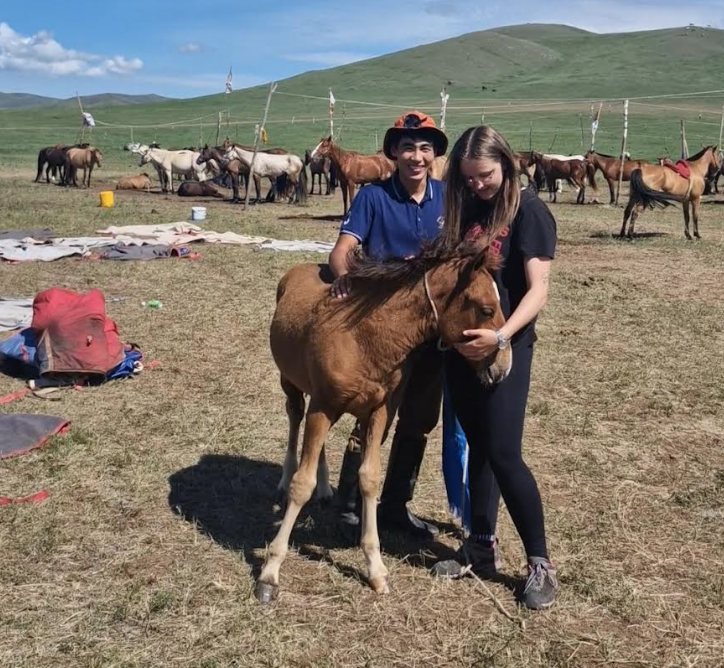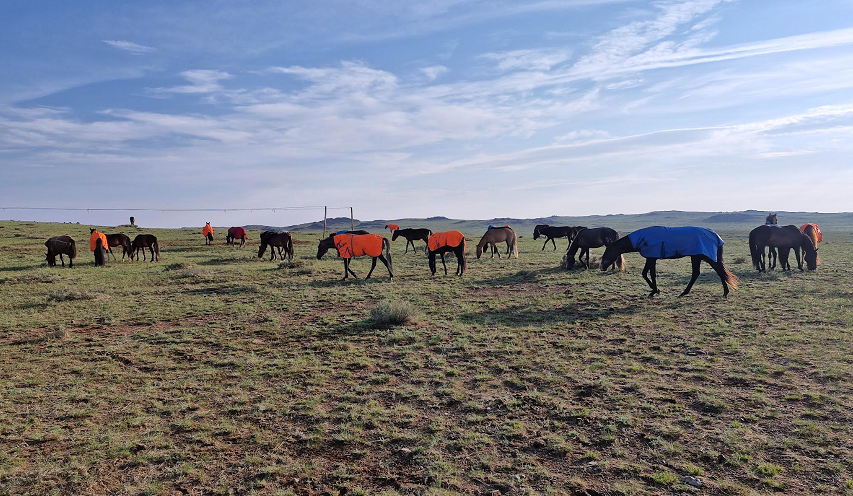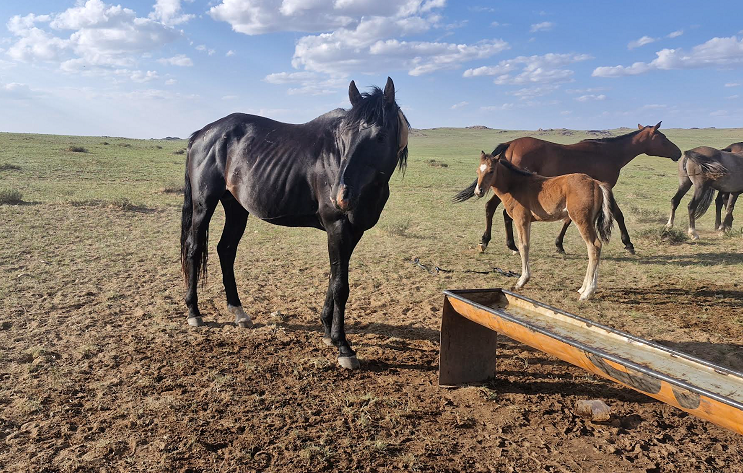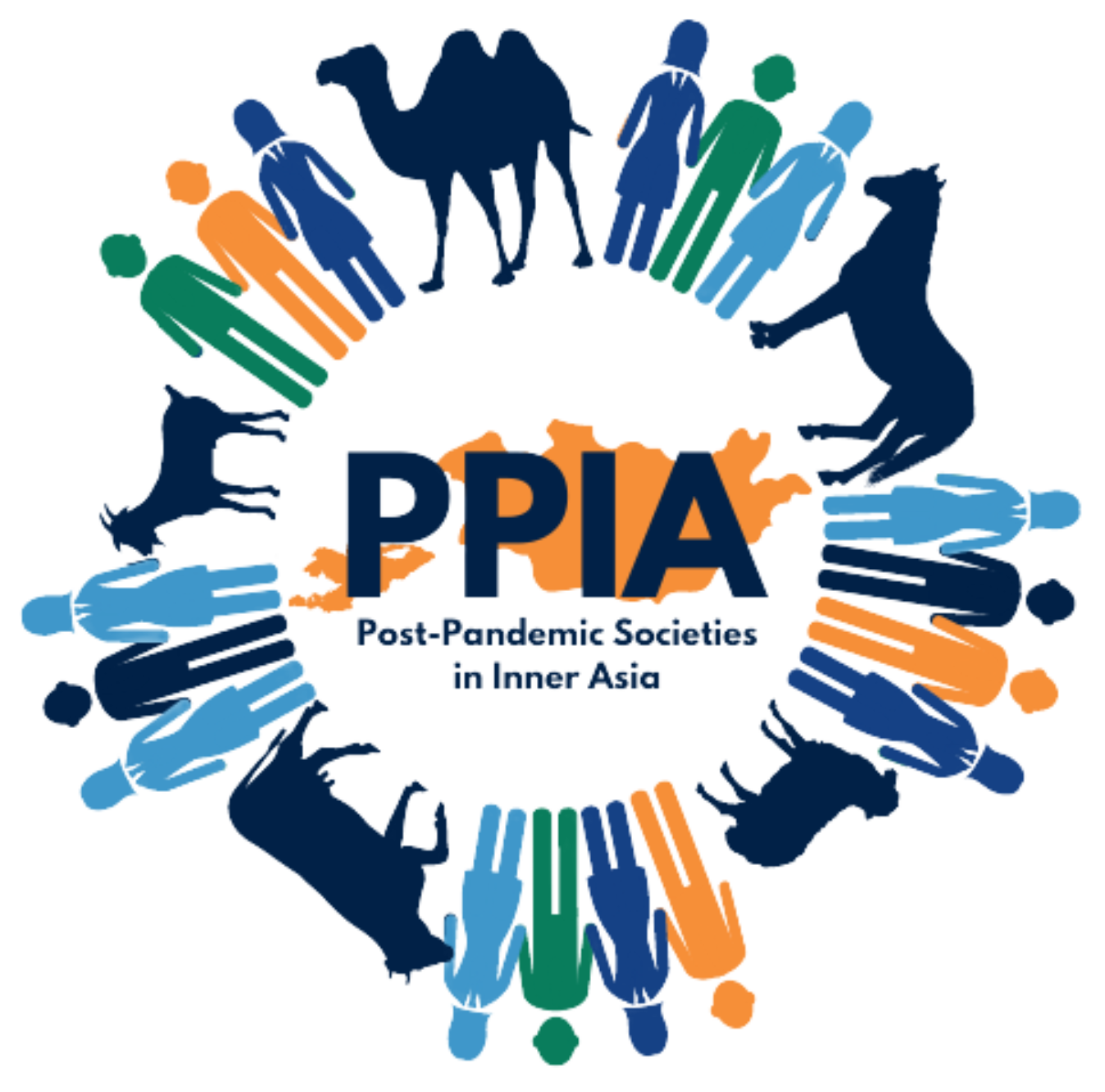For three months over the summer of 2024, I was fortunate enough to visit Mongolia to conduct research for my MSc in Nature, Society and Environmental Governance at the University of Oxford. My project focused on the cultural importance of horses to Mongolian life and identity, paying particular attention to racehorses, and horse racing. Specifically, I was interested in understanding how biological and material changes to Mongolian horses through hybridisation with Western stallions are having intangible implications on notions of Mongolian culture and identity.
To better understand this, I was generously welcomed into the home of one horse trainer and his family in Khuld Sum Dundgobvi Province, where I stayed for two weeks watching, participating, and (trying to!) help with all horse-related activities. It was here that I rode my first Mongolian horse, experiencing for myself the wonder of galloping across the Mongolian steppe. During these two weeks, I was also taken to and included within four Naadams including the National Naadam in Ulaanbaatar.
After I said goodbye to my host family, I also attended two further Naadams – the Sergelen Sum and Danshig Naadam – where I spoke with 12 more horse trainers, each of whom generously offered additional insights into their way of life, and seemed interested in why I – a white, young, female student from England – was not only interested in horses, but seemed to understand and be able to ride them so well. Through the horse trainers that I met, I was also invited to visit another horse trainer in Sergelen, where – to the delight of the trainer, his apprentices, and jockeys – I rode my first Mongolian racehorse, a profound experience. I clearly made an impression, as this led to me being gifted my very own 25% erliiz foal, a fine young colt who will hopefully grow up to himself be a powerful racehorse in the coming years.

Overall, my research highlighted, explored, and analysed changing equine practices (breeding, training, and racing) within Mongolia, and the ambivalent implications this is having on notions of culture and identity for Mongolian people. Specifically, I focused on how horse trainers are increasingly breeding non-Mongolian stallions with their Mongolian mares to create erliiz foals, are using a variety of Western supplements and products such as feed, medication, and coats to enhance traditional training processes, and are entering these erliiz into Mongolian horse races, despite the introduction of height restrictions by the Mongolian government to try and limit, or control, these practices.

I further attended to how these changes are impacting Mongolian culture and identity, exploring the complex, contested, and ambivalent debates, opinions, and reactions to these changes. Some recognised hybridisation as a form of cultural loss and degradation, believing that these changes are leading to the dilution of Mongolian horse genetics, their associated characteristics, and what they represent for Mongolian people, such as their fragility requiring additional care, especially throughout the harsh Mongolian winter. Taking this further, some trainers even believed and lamented that hybridisation will ultimately mean that the Mongolian racehorse will be irreversibly altered and lost. However, others understood these changes as a form of evolution, development, and progress, leading towards the creation of a new hybrid horse which would excel not only within Mongolia, but across the world. These divergent and ambivalent attitudes emerged not only between different horse trainers, and horse trainers and the Mongolian Government, but also within individual horse trainers themselves, who often felt conflicted in their thoughts.

Alongside this, my research documented further changes surrounding who is able to competitively participate within horse racing. Historically, any Mongolian could be a horse trainer, a contrast to the contemporary situation where the high cost of purchasing Western stallions, feed, supplements, and equipment means that only wealthier individuals are able to remain competitive. This again led to divergent opinions, with many smaller, traditional trainers finding it difficult to engage with horse breeding, training, and racing, in contrast to larger-scale trainers who were shifting towards more industrial style training scenarios, including training horses for other, wealthy, and often urban-dwelling individuals. This highlighted a further shift within horse culture, and the relationship between horse racing and pastoralism, as larger-scale horse trainers are increasingly focusing exclusively on horse breeding, tracing, and racing over integrated pastoral systems.
The three months that I spent in Mongolia were a lifechanging, heartwarming, and unforgettable experience, largely due to the wonderful, welcoming, and kind people (and horses) that I met through my research. This made Mongolia feel like so much more than a field site; it became a home, a place where a piece of me will always remain, and a place which I continue to feel drawn to. Who knows, hopefully one day soon I will return to ride my own Mongolian erliiz throughout the steppe, and maybe even become a horse trainer myself…



No responses yet